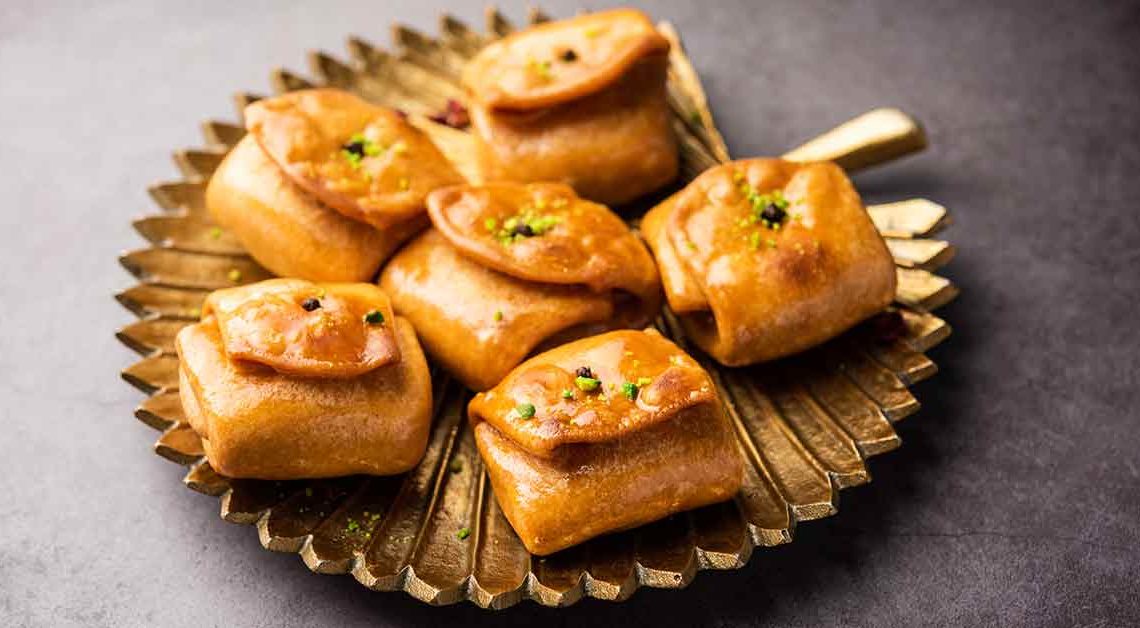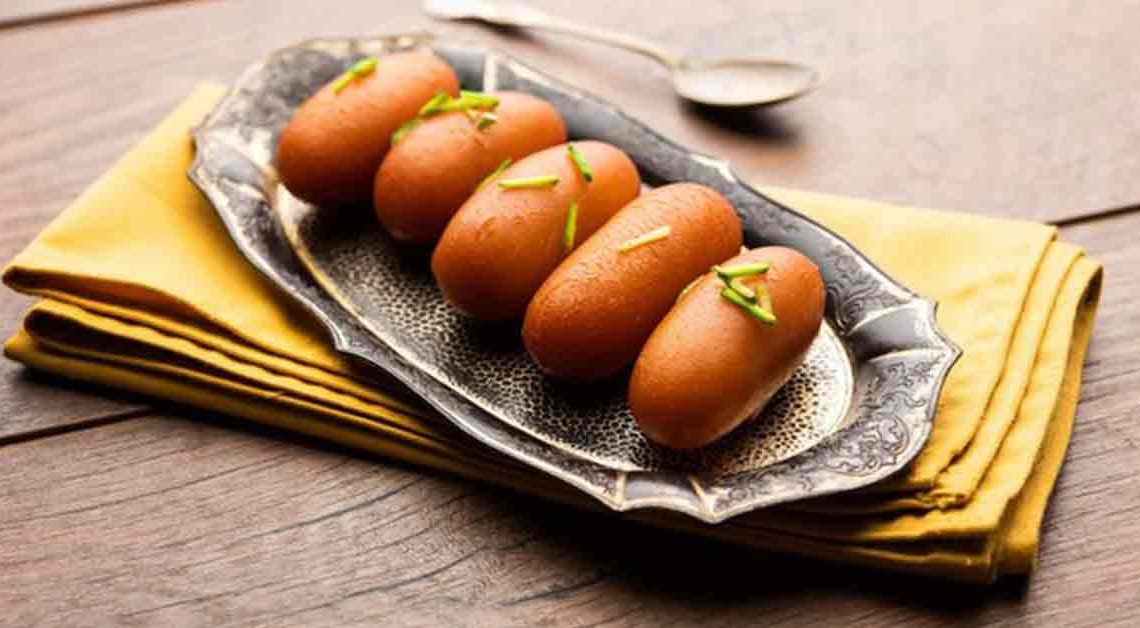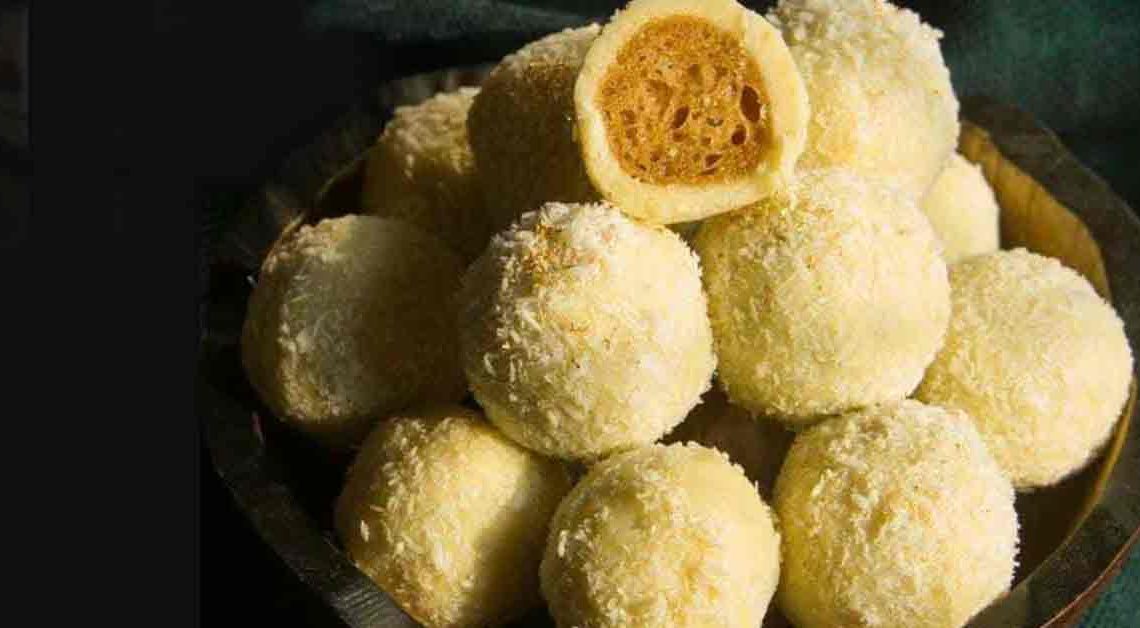Delightful Bites of Tradition: Exploring the Essence of Lavang Latika

Welcome to a culinary journey on Mithainama that transcends time and space, bringing you the essence of an age-old Indian delicacy that has been cherished across generations – the delectable Lavang Latika. Our food blog is your gateway to discovering the rich heritage, tantalizing flavors, and heartwarming stories behind this enchanting dessert.
A name that whispers of fragrant spices, delicate layers, and a symphony of textures that dance on your taste buds. Originating from the vibrant kitchens of Bengal, Lavang Latika is a dessert that beautifully weaves together the magic of festivities and culinary artistry.
Imagine golden pockets of crispy pastry, lovingly folded into intricate shapes, concealing a luscious filling of rich khoya, nuts, and the subtle warmth of cloves. Each bite tells a tale of dedication – the hands that craft these edible treasures are no less than artists, passing down traditions through the ages.
Let’s embark together on a journey that celebrates the past while savoring the present – one bite of Lavang Latika at a time.
Origin of Lavang Latika
The origin can be traced back to the Indian state of West Bengal, where it is deeply rooted in the region’s rich culinary heritage. This exquisite dessert holds a special place in Bengali culture and is often associated with festive celebrations, particularly during Durga Puja, Diwali, and other significant occasions.
The history is intertwined with the tradition of making intricate sweets and pastries in Bengal. The term “Lavang” translates to “clove” in English, and “Latika” refers to a delicate and intricate structure. These names perfectly encapsulate the essence of this dessert – a fragile, clove-scented pastry that is carefully crafted into beautiful shapes.
Lavang Latika’s historical significance goes beyond its taste and visual appeal. It represents the artistry and craftsmanship that have been passed down through generations, encapsulating the essence of Bengali culinary traditions. As families come together to prepare and share this dessert during special occasions, they not only indulge in its delicious flavors but also continue the legacy of a cherished cultural heritage.
History of Lavang Latika
The history is a tapestry woven with cultural threads, tracing its roots back to ancient Bengal and the rich culinary traditions of the region.
Its history can be linked to the opulent kitchens of the Mughal era, where intricate sweets and desserts were a hallmark of royalty and grand feasts. The dessert’s delicate preparation and use of aromatic spices like cloves and cardamom reflect the Mughal influence on Indian cuisine.
Over time, the art of making became deeply ingrained in Bengali culinary practices. The dessert became a symbol of festivities and special occasions, a testament to the Bengali love for intricate sweets.
Making Lavang Latika involves a labor of love. Families come together to prepare the delicate pastry, fill it with aromatic khoya and nuts, and fold it into intricate patterns. This communal cooking experience fosters bonds and strengthens the sense of togetherness within families.
Cultural Significance
Lavang Latika holds a deep cultural significance within the culinary landscape of India, particularly in the region of Bengal. Its cultural importance can be understood through the following aspects:
Festive Celebrations: It is closely associated with major Indian festivals like Durga Puja and Diwali. During these celebrations, families come together to prepare and enjoy this sweet delicacy.
Culinary Heritage: It is a testament to the diverse and flavorful nature of Indian cuisine. Its combination of khoya, nuts, and aromatic spices like cloves and cardamom captures the essence of traditional flavors.
Generational Bonding: The preparation often involves multiple generations coming together. Elders pass down the techniques and recipes to younger family members, fostering a sense of connection and preserving family traditions.
Where is Lavang Latika Famous?
Lavang Latika is particularly famous in the Indian state of West Bengal, where it originates. This region holds a deep connection to the dessert due to its cultural significance and historical roots. Within West Bengal,it is widely enjoyed and prepared during various festivals and special occasions.
Kolkata, the capital of West Bengal, is a hub of Lavang Latika’s popularity. During festivals like Durga Puja and Diwali, sweet shops and households in Kolkata showcase their culinary expertise by preparing and presenting in all its intricate glory.
Beyond West Bengal, its popularity extends to other parts of India where Bengali cuisine is celebrated. In regions with a significant Bengali population, such as parts of Assam, Tripura, and even Delhi, Lavang Latika might be found in local sweet shops and prepared during festive seasons.
Interesting Facts and Trivia
Certainly, here are five interesting facts and trivia about Lavang Latika:
- The name “Lavang Latika” derives its roots from Persian and Hindi. “Lavang” means “clove” in Hindi, reflecting the dessert’s use of cloves as a key ingredient.
- It is closely associated with festive celebrations in Bengal. During Durga Puja and Diwali. This tradition adds an extra layer of joy to these special occasions, making the dessert an integral part of the festive spread.
- Crafting Lavang Latika is an art in itself. The process involves rolling out thin dough, filling it with khoya and nuts, and then folding it into intricate shapes resembling envelopes or parcels.
- The use of cloves in sweets serves both a culinary and cultural purpose. Cloves not only infuse the dessert with a distinctive aroma but also symbolize the blend of flavors that characterizes Indian cuisine.
- The preparation is often a communal activity. Families come together to make the dessert, reinforcing bonds between generations. This shared cooking experience goes beyond culinary skills, fostering a sense of togetherness and preserving cultural traditions.
Did You Know?
Lavang Latika, the beloved Bengali dessert, isn’t just a treat for your taste buds—it also offers a range of health benefits!
- It contains nuts like almonds and pistachios, which are rich in essential nutrients like vitamins, minerals, and healthy fats. These nuts contribute to overall well-being and provide a nourishing boost.
- The use of aromatic spices like cloves and cardamom not only enhances the flavor but also brings potential health benefits. Cloves, for instance, are known for their antioxidant properties and potential anti-inflammatory effects.
- The combination of khoya (reduced milk solids) and nuts provides a quick source of energy, making it an ideal choice for a midday pick-me-up or a post-workout snack.
- The inclusion of aromatic spices like cloves and cardamom can aid digestion by promoting healthy digestion and soothing discomfort.
- While desserts offer health benefits, it’s important to enjoy them in moderation. Savoring this dessert mindfully can satisfy your sweet cravings without overindulging.







